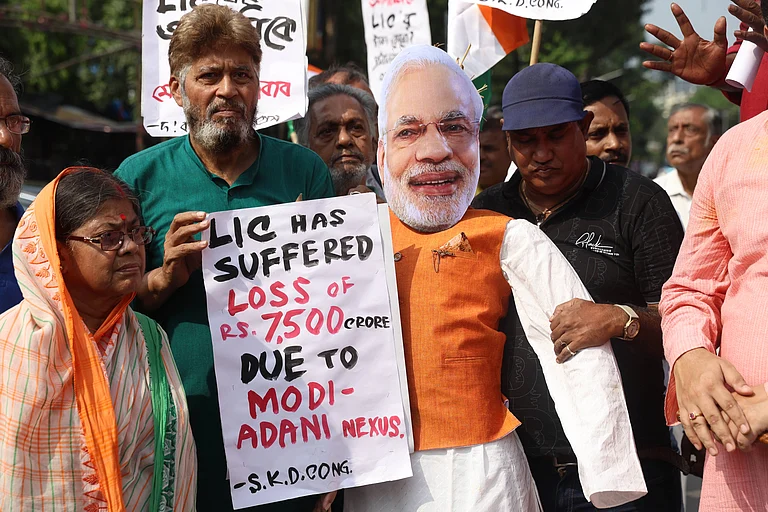In a renewed call to action, a team of senior oncologists from the All India Institute of Medical Sciences (AIIMS), Delhi, have urged the Government to mandate explicit cancer warning labels on alcohol bottles, akin to those on tobacco products.
The appeal comes against the backdrop of mounting evidence linking alcohol consumption with several forms of cancer, and rising concern over adolescent drinking patterns in India.
Alcohol was officially classified as a Class 1 carcinogen by the World Health Organization (WHO) over three decades ago. Since then, the evidence base has only expanded. A landmark 2015 meta-analysis examining over 485,000 cancer cases across multiple studies concluded that even low levels of alcohol consumption increase the risk of several cancers — notably of the breast, liver, colorectal, and oesophagus.
In India, where adolescents form 21% of the population, experts fear that inadequate public health messaging and lax enforcement could aggravate already alarming trends. Reports of alcohol initiation as early as 13–15 years of age is not hidden, with limited policy interventions in place to curb the trend.
While the Food Safety and Standards Authority of India (FSSAI), under the Union Health Ministry has mandated health warnings on alcohol bottles since April 2019, these are generic and fail to explicitly convey the carcinogenic risk. Labels currently read “Consumption of alcohol is injurious to health” and “Be safe: Don’t drink and drive”.
In a recent opinion piece published in Frontiers in Public Health, Dr. Vaibhav Sahni, Dr. Deepak Saini, and Dr. Abhishek Shankar from the Department of Radiation Oncology at AIIMS, Delhi have argued that existing measures are insufficient. “Behavioural interventions through targeted cancer warning labels on alcohol bottles could prove effective, especially among adolescents in low- and middle-income countries like India,” they wrote.
The oncologists note that alcohol is conclusively linked to at least seven types of cancers: breast, colorectal, oesophageal, liver, oral, throat, and laryngeal cancers. Importantly, they emphasise that there is no safe threshold — even moderate drinking poses risk, a fact also confirmed by the WHO.
Data is scary. The figures available from National Family Health Survey (NFHS-4) indicates that alcohol consumption is reported by 1% of women and 29% of men in the 15–49 age group. Meanwhile, cancer incidence in India has surged by 36% from 2012 to 2022, reaching 1.38 million cases, as per GLOBOCAN 2022. The country also recorded over 916,000 cancer-related deaths and a five-year prevalence of 3.25 million.
The researchers further flagged the regional dimension: from 2010 to 2017, Southeast Asia saw a 34% rise in per capita alcohol consumption. In such a scenario, LMICs like India must not only respond with urgency but also adopt globally tested interventions, including labelling norms.
“Many individuals associate alcohol with liver damage, but are unaware of its link to breast and colorectal cancers,” the authors pointed out. They recommended warnings must also address the multiplicative risk posed by the co-use of alcohol and tobacco — a combination that significantly elevates cancer risk, particularly of oral and pharyngeal cancers.
According to experts all over the world, despite initial scepticism, warning labels on cigarette packs have emerged as one of the most impactful tobacco control tools worldwide. When first introduced in the UK in 1971, many doubted their potential. Yet by 2008, a major study revealed that 70% of smokers reported being influenced by graphic warnings—prompting them to reduce or quit smoking altogether.
The principle behind such labels is simple but powerful: consistent, visible, and truthful information changes behaviour—especially when it links consumption with real health consequences.
In fact, the matter is already under the scanner of the Bombay High Court which has recently issued notices to the Centre, the Maharashtra Government and FSSAI in response to a Public Interest Litigation (PIL) seeking mandatory cancer warnings on alcohol labels.
Filed by Pune-based IT professional and activist Yash Chilwar through advocate Pooja Phagnekar, the petition cites personal experiences and public health imperatives. The petitioner invoked Article 47 of the Constitution, which enjoins the State to improve public health and endeavour towards prohibition of intoxicants.
The plea also referenced WHO data, which attributes over three million annual deaths globally to alcohol use. Despite India being a WHO member, the risk of cancer from alcohol consumption is not adequately communicated to the public, the PIL notes.
The WHO’s Global Status Report on Alcohol and Health and Treatment of Substance Use Disorders (2023) too revealed a stark gender disparity in alcohol-attributable harm. The disease burden remains heaviest among men, with two million alcohol-related deaths and 6.9% of all disability-adjusted life years (DALYs) attributable to alcohol use in males, compared to 0.6 million deaths and 2.0% of DALYs in females as of 2019.
The report also painted a sobering global picture: an estimated 400 million individuals—or 7% of the world’s population aged 15 and above—live with alcohol use disorders. Of these, 209 million people suffer from alcohol dependence, amounting to 3.7% of the adult global population.
The call for stricter labelling echoes international momentum. Ireland is set to become the first country to mandate cancer warning labels on alcoholic beverages from May 2026. The labels will explicitly mention the link between alcohol and fatal cancers, alongside warnings on liver disease and risks to foetal health.
Dr. Shankar and colleagues have also proposed that warning labels be constructive rather than merely fatalistic — encouraging users to seek preventive screening or medical advice.
“Current policy frameworks remain fragmented and reactive,” lamented Dr. Shankar while talking to The Outlook Health. He added most focus on treating alcohol dependence in adults rather than on preventive strategies targeting younger populations.
“Labelling alcohol bottles with cancer warnings is not just a regulatory issue, but a matter of public health and consumer rights,” Dr. Shankar added. “People deserve to know what they’re consuming — and the risk it carries.”
However, the real question is: Will the Government take the necessary steps aligned with its responsibilities under the Constitution, or will this preventable crisis persist—continuing to affect young lives, strain families, and place additional pressure on our healthcare system?










.png?auto=format%2Ccompress&fit=max&format=webp&w=768&dpr=1.0)















